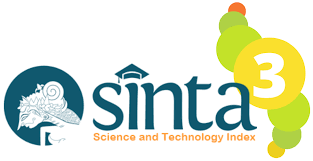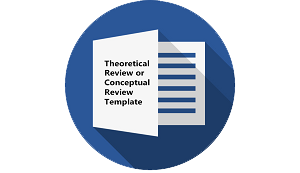Semantic Structure of Process Verbs in Minangkabau Language
DOI:
https://doi.org/10.30957/lingua.v21i1.824Keywords:
semantic of verb; natural semantic metalanguage; achievement verbAbstract
Verbs will be examined through an interrogative construction, which will elicit the states, processes, and actions of verb members in sequence to analyze the proper identification of verb membership. This research is a qualitative descriptive study. Through the use of semantic analysis, this study aims to investigate and describe process verbs in the Minangkabau language. Semantic investigation relates to the roles played by each filler in these functions. The information presented in this paper is based on oral interviews and written data. The primary data source is oral information from Minangkabau dialect informants. The semantic features of process verbs are [+dynamic], indicating the subtypes of event, [+punctual], indicating non-agentive motion subtypes, and [-punctual], indicating process verbs of enduring events. It can be concluded that process verbs in Minangkabau possess semantic components that are [+dynamic] and [+/- punctual]. The semantic structure of Minangkabau process verbs can be explained in their original sense, which serves as the basis for their construction. Process verbs are constructed from the words "HAPPEN" and "DO," which have equivalent or similar meanings. The explanation of Minangkabau process verbs can be accomplished with the help of a set of available original meanings in the natural semantic metalanguage syntax.
Downloads
References
Ekasrjadi, I., & Agung, A. (2004). Struktur dan Peran Semantis Verba Bahasa Bali.
Fielder, G. E. (1990). Aspect and Lexical Semantics: Russian Verbs of Ability. The Slavic and East European Journal. (34(2)), 192–207. https://doi.org/10.2307/309145
Foley, & Valin, V. (1984). Functional Syntax and Universal Grammar. Cambridge: Cambride University Press.
Frawley, W. (1992). Linguistic Semantics. New Jersey: Lawrence Erlbaum Associates.
Givon, T. (1984). Syntax : A Functional Typological Introduction (Vol. I). Amsterdam: John Benjamins.
Goddard, C. (n.d.). Semantic Molecule. http://escape.library.uq.edu.au/eserv/UQ:12798/ Goddard_C_ALS2006.pdf
Goddard, C. (1996). Semantic Theory and Semantic Universal (Cliff Goddard Converner) Cross Linguistic Syntax from Semantic Point of View (NSM Approach). 1-5 Australia.
Goddard, C. (1998). Semantic Analysis. Oxford: Oxford University.
Goddard, C., & Wierzbicka, A. (2006). Semantic primes and universal grammar: Empirical evidence from the Romance languages. John Benjamins Publishing.
Goddard, C., & Wierzbicka, A. (2010). Contrastive semantics and cultural scripts: Evidence from the semantics of 'happiness' in English and Russian. Pragmatics & Cognition, 18(2), 306-334.
Hopper, P. J., & Thompson, S. A. (1980). Transitivity in Grammar and Discourse. Language, (56), 251-299.
Mulyadi. (1998). Struktur Semantis Verba Bahasa Indonesia.
Mulyadi. (2000). Struktur Semantis Verba Bahasa Indonesia. Linguistika, (13), 40-51.
Mulyadi. (2009). Kategori dan Peran Semantis Verba dalam Bahasa Indonesia. Logat Jurnal Ilmiah Bahasa Dan Sastra, V, 56-66.
Mulyadi. (2015). PARAMETER VERBA EMOSI. Tutur, I, 203-.
Mulyadi, & Siregar, R. K. (2006). Aplikasi Teori Metabahasa Makna Alami dalam Kajian Makna. Logat, II, 69-75.
Rianasari, N. N., & Mukhlish. (2018). VERBA PERBUATAN DALAM BAHASA INDONESIA. 95.
Subiyanto, A. (2008). Verba Gerakan Bukan Agentif Bahasa Jawa : Tinjauan Metabahasa Semantik Alami’. Kajian Linguistik Sastra, 32(no 03).
Subiyanto, A. (2011). Struktur Semantik Verba Proses Tipe Kejadian Bahas Jawa : Kajian Metabahasa Semantik Alami. 166-167.
Tampubolon, D. P. (1979). Tipe-Tipe Semantik Kata Kerja Bahasa Indonesia Kontemporer. Jakarta : Pusat Pembinaan dan Pengembangan Bahasa.
Van Valin, R. D., & LaPolla, R. J. (2012). Syntax: Structure, Meaning, and Function. Cambridge University Press.
Van Valin, Jr, R. D. (2000). In A Concise Introduction to Role and Reference Grammar FlUMINENSIA (god 12 ed., pp. 47-78).
Verhaar SJ,, J.W.M. (1980). Teori Linguistik dan Bahasa Indonesia. Penerbitan Yayasan Kanisius.
Wierzbicka, A. (1996). Semantics : primes and universals. Oxford University Press.
Wierzbicka, A. (2008). Why there are no 'color universals' in language and thought. Journal of Consciousness Studies, 15(7), 25-50.
Downloads
Published
How to Cite
Issue
Section
License
Authors who publish with this journal agree to the following terms:
- Authors retain copyright and grant the journal right of first publication with the work simultaneously licensed under a Creative Commons Attribution-ShareAlike 4.0 International License that allows others to share the work with an acknowledgement of the work's authorship and initial publication in this journal.
- Authors are able to enter into separate, additional contractual arrangements for the non-exclusive distribution of the journal's published version of the work (e.g., post it to an institutional repository or publish it in a book), with an acknowledgement of its initial publication in this journal.
- Authors are permitted and encouraged to post their work online (e.g., in institutional repositories or on their website) prior to and during the submission process, as it can lead to productive exchanges, as well as earlier and greater citation of published work (See The Effect of Open Access).















